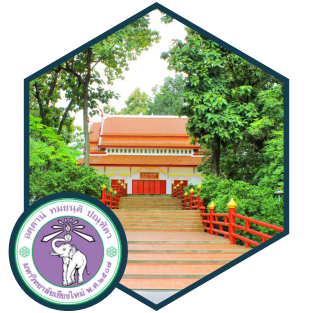Background
Thailand’s first provincial tertiary institution, Chiang Mai University (CMU), has notched another first for its home country as the inaugural institution-wide user of the Canvas learning management system (LMS).
The university was founded in 1964 and is committed to social responsibility and sustainable development. It offers about 100 undergraduate and 160 postgraduate courses across four campuses.
CMU is the third-top university in Thailand, according to the QS World University Rankings 2023. The university specializes in engineering, science, agriculture, and medicine.
Key Insights
Adopting Canvas has been an important strategic investment for CMU, potentially elevating it to a digital leader in Thailand’s higher education sector. The university needed an LMS with a high usability rate. Its previous solution notched just 50% usage despite being available for 15 years.
The university has found a “big difference” between the free, open-source Canvas and the Cloud version.
Using the Cloud offloads a lot of the IT team’s work, allowing it to focus on better supporting instructors.
The Challenge
The COVID-19 pandemic was an impetus for the university to look into further digitalization.
“It was a huge boost for digital literacy among CMU’s instructors,” says Arnan (Roger) Sipitakiat, Director of the University’s Teaching and Learning Innovation Center. He’s also the Group Director, Learning Inventions Laboratory, and lectures in and researches computer engineering.
CMU’s courses had been hosted on the free Moodle LMS for 15 years, but there was low adoption and engagement, with only 50 percent of classes using it. He also says there were increasingly usability, scalability, security, stability, and cost issues.
“Those who love Moodle keep loving it, but the downside is usability, and it was very difficult to expand its usage across the university.”
CMU wanted a platform with a high adoption rate that could offer deep analytics across learning modes – remote, hybrid or in-person.
Arnan had heard “good things” about the reputation of Canvas from overseas peers, so he investigated three US universities that use the open-source or cloud-native hosted
The idea of paying for this infrastructure at this scale is new for Thailand and many similar countries. I worked out what
percentage of the tuition fees we’re using for Canvas, which turns out to be very reasonable.
Arnan (Roger) Sipitakiat
Director of Teaching and Learning Innovation Center
versions of Canvas LMS. In 2020, CMU trialed the opensource version for 300 courses using a small server.
“I wanted to see how the full, paid version was compared to the open source to ensure we weren’t missing anything. There’s a big difference. It’s very hard to make it work on open source, plus the new quizzes and Canvas Commons and a few other things aren’t on the free version.”
In 2021, CMU pilot-tested 6,000 students using the (paid) cloud-hosted Canvas LMS.
The Solution
Investing in the paid Canvas LMS version resonated with CMU’s leadership because it gave the university a “competitive advantage as a leader in digital learning”, says Arnan.
“The idea of paying for this infrastructure at this scale is new for Thailand and many South-East Asian countries. I worked out what percentage of the tuition fees we’re using for Canvas, which turns out to be very reasonable.”
However, CMU is now gradually leveraging Canvas LMS across the organization, with 13,000 students and faculty staff using it in 2022. That will be boosted to 38,000 people in three years.
“I’ll be happy if at least 95% of our instructors move to Canvas LMS. We want them to use the transformative side of this technology, not just substitute for paper and pencil,” says Arnan.
Already, several APAC universities have asked him how the rollout is going.
“Using Cloud offloads a lot of work for my small team and me so we can focus on supporting our instructors. We don’t have to worry if a server can take the load if we have a big exam – that’s a big paradigm shift.”
Meanwhile, the Canvas LMS offers intuitive options for staff and student engagement, helping boost usability. Arnan sees this when showing instructors how to create quizzes on it.
“Using Cloud offloads a lot of work for my small team and me so we can focus on supporting our instructors. We don’t have to worry if a server can take the load if we have a big exam – that’s a big paradigm shift.”
“It’s a very close experience to Google Forms, but Canvas is much more capable, so people say ‘wow, this is cool’.
“Canvas rubrics are well designed, making instructors want to try them. When students present their work, instructors go around with an iPad and tap on each rubric to give feedback.
Download Case Study
